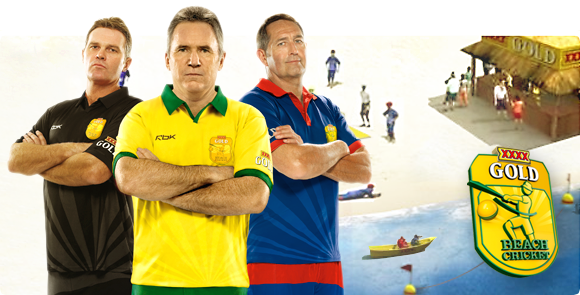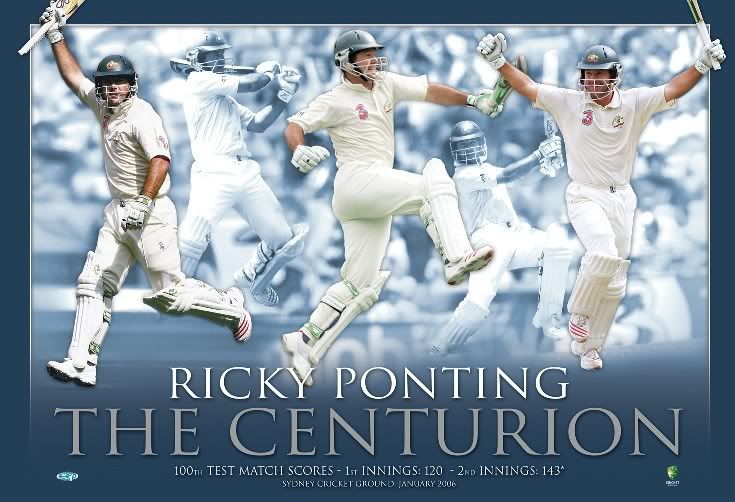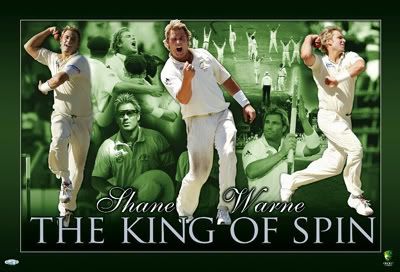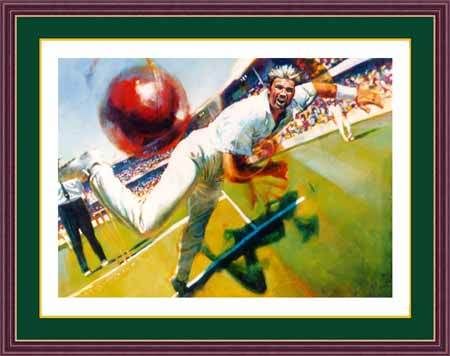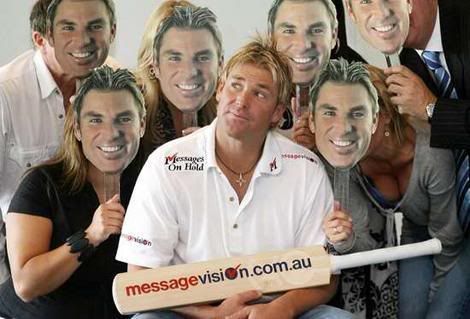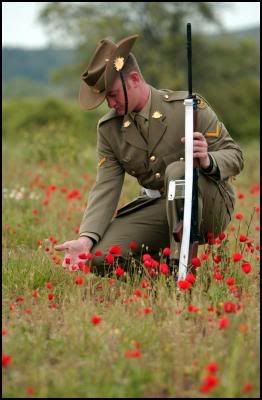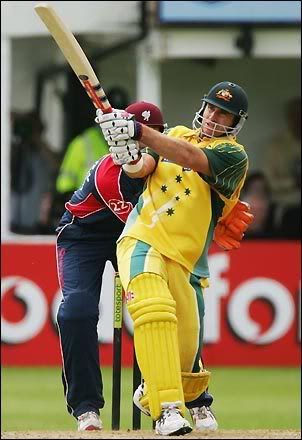
Matthew Lawrence Hayden (born 29 October 1971) is an Australian cricketer. He was born in Kingaroy, Queensland to Laurence and Moya Hayden. He was educated at Marist College in Ashgrove and he is an Australian and Queensland representative cricketer.
Hayden (nicknames: Haydos, Unit) is a powerful and aggressive left hand opening batsman, known for his ability to score quickly at both Test and one day levels. He is particularly proficient when hitting down the ground. Hayden currently holds the record for the highest scores made by an Australian batsman in both the Test (380) and One Day International (181 not out) arenas. He formed one of the most prolific opening partnerships in world Test cricket for Australia with Justin Langer, and in ODI cricket with Adam Gilchrist. He is currently partnered with Simon Katich as an opener in the Australian Test team.
Test career:
Hayden debuted for the Australian team in the 1994 March 4-8 Test Match against South Africa in Johannesburg, scoring 15 and 5. His next Test selection was in the 1996/7 season, with three each against the West Indies and South Africa. He made his debut century (125 against WI in Adelaide) aided by multiple dropped catches by the West Indies side. His average of 21.7 was not enough to keep his position in the Australian side, and in particular openers Mark Taylor and Matthew Elliott. He was dropped from the team, and it appeared his international career was over, compared occasionally to that of Graeme Hick, a fine domestic performer with not quite enough to make it at the highest level.
During these years Hayden was a prolific batsman for the Queensland first-class cricket team. Weight of domestic cricket runs and persistence resulted in a resurrection of his international career for the 1999-00 tour of New Zealand. In the subsequent 2000-01 tour of India he averaged a Bradmanesque 109.80 with 549 runs, an Australian record for a three-Test series. Since then, he has been an automatic selection for the Test side. In the 2007-08 series against India, Hayden scored three centuries, raising his tally of centuries against India to five. He currently has thirty test centuries to his name, the first left-handed opening batsman to achieve this feat.
In 2001, Hayden scored a then-Australian record of 1,391 runs in Test matches in one calendar year, and subsequently won the Allan Border Medal as the best Australian player of the year. He picked up where he left off the following season with a seven-hour 119 against Pakistan in the Sharjah heat, which approached 50 degrees celsius.
He scored over 1,000 Test runs in 2001, 2002, 2003, 2004 & 2005, the first man to achieve the feat five times. He was selected as one of Wisden's five 2003 Cricketers of the Year and briefly held the world record for the highest Test score, 380, which he reached at the WACA against Zimbabwe on 10 October 2003, having batted only five sessions. As of July 2008, Hayden had the third highest conversion-rate in history, with a Test century every 3.13 Tests played, behind only Don Bradman at 1.79, and Clyde Walcott at 2.93.
Despite these achievements, Hayden has received criticism from some quarters for being a "flat-track bully". Critics have contrasted his ability to score big runs on ideal batting pitches against weak attacks, with how he was troubled during the 2005 Ashes by the less batsman-friendly English conditions. Against a high-quality swing and pace attack, the "fantastic foursome" of Steve Harmison, Matthew Hoggard, Andrew Flintoff and Simon Jones, he averaged a meagre 35.33 across the five-match series. With his Test spot under pressure going into the Fifth Test at the Oval, Hayden rescued his career with a hard-fought 138 from 303 balls. His 21st Test century signalled a return to form for Hayden for the the Australian season of 2007/08, scoring three centuries in three consecutive Tests against the ICC World XI and West Indies. Hayden scored one century during the Boxing Day Test against South Africa, and another in the away series in South Africa played in March 2006.
Hayden played in the highly-anticipated 2006-07 Ashes series, against England. He failed to reach 40 in the first three innings of the series, but again returned to form with scores of 92 in Perth, and 153 in the Boxing Day Test. The century at Melbourne continued Hayden's rich vein of form at the MCG, being his fifth in eight Tests there.
Hayden's defenders point out that he was not alone in finding England tough-going in 2005, as even Australia's captain and talisman Ricky Ponting averaged under forty, while other big names such as Adam Gilchrist and Damien Martyn failed to impress with averages near twenty.
Hayden has also been a regular and successful slip fielder for Australia, and has taken the thirteenth-most catches by a non-wicketkeeper in Test history. He also shares the record for the most catches by a non-wicketkeeper in a single Test Match, with seven against Sri Lanka in 2004. His most notable fielding partnership was with Shane Warne, with the "caught Hayden, bowled Warne" dismissal being the equal third most common partnership for a non-wicketkeeper and bowler: their 39 wickets are behind only "caught Taylor, bowled Warne" and "caught Dravid, bowled Kumble".
Hayden's most notable opening batting partner was Justin Langer. The opening pair represented Australia in more than 100 Test innings. The pair made 5654 runs while batting together in partnerships, with an average of 51 runs per partnership; only Gordon Greenidge and Desmond Haynes of the West Indies have scored more Test runs as a partnership, with 6482.
ODI:
Hayden also played in the Australian side that won the 2003 One Day International Cricket World Cup. He was dropped from the ODI squad because of poor form after The Ashes in 2005, though he could not be kept away from the ODI squad for long. He returned to the Australian squad in the 2006-07 Australian season after Simon Katich fell out of favour and Shane Watson was injured. He dominated the Cricket World Cup in the West Indies as the tournament's best batsman in 2007, scoring three centuries before the completion of the Super 8s section of the tournament.
On 20 February 2007, Matthew Hayden posted his highest ODI score (181 not out) against New Zealand at Seddon Park in Hamilton. Australia posted 346 for 5 wickets and New Zealand replied with 350 for 9 wickets and won the Chappel-Hadlee series 3-0.
Hayden hit another milestone against the Kiwis when he become only the third person (the others being Mark Waugh and Sourav Ganguly) to hit 3 centuries (101 vs RSA, 158 vs WI, 103 vs NZ) in a single World Cup tournament on 20 April 2007. The century against South Africa came off just 66 balls and is the fastest World Cup ton ever beating the previous record set by John Davison. The Prime Minister of St Kitts and Nevis awarded Hayden with honorary citizenship after the match.
Hayden also became only the second player in World Cup history to surpass 600 runs in a single tournament. He needed to score a further 52 runs to equal the record that was set by Sachin Tendulkar in the previous World Cup but fell short by 14 runs. He ended the tournament with 659 runs at an average of 73.22.
In September 2007, Hayden was named ODI Player of the Year after his dominating performance throughout the World Cup. An extraordinary performance considering his place in the Australian side was in jeopardy during the Australian VB Series against England and New Zealand. He officially holds the record for being the top runs scorer in the 2007 ICC World Twenty20, scoring 265 runs in the whole tournament.
Matthew Hayden played for the Chennai outfit Chennai Super Kings in the inaugural Indian Premier League (IPL) in April 2008. After a poor run of form in the Test arena during 2008, Hayden was dropped from the ODI and Twenty20 squad in January 2009. It still remains unclear as to whether his test career is continuing after so many recent failed test match innings.
England County:
Hayden has played in the English County Championship, first with Hampshire in 1997 and prominently as captain of Northamptonshire in 1999-2000.
Controversies:
He was a party to the controversy that emerged from the Second Test, 2007-08 Border-Gavaskar Trophy racism charges pressed by Australia against India, and was one of the witnesses for Andrew Symonds` charges against Harbhajan Singh.
As a fallout of that instance in February 2008, Hayden was charged for a code of conduct violation by Cricket Australia, for calling the Indian spinner Harbhajan Singh an obnoxious little weed, and for inviting Indian fast bowler Ishant Sharma for a fight, during an interview aired on Brisbane radio station; he was also heard to mimic Sharma`s Indian accent in this exchange.
He was reprimanded for his comment by Cricket Australia, but maintained his innocence.
He was strongly criticized by the BCCI and former Pakistan team captain Wasim Akram for reportedly calling India a third world country. Back home after a 2–0 series defeat by India, Hayden spoke about, what he perceived, poor ground conditions and inordinate delays during the matches "that happen in Third World countries".
Personal life:
Links to more information on Matthew Hayden:
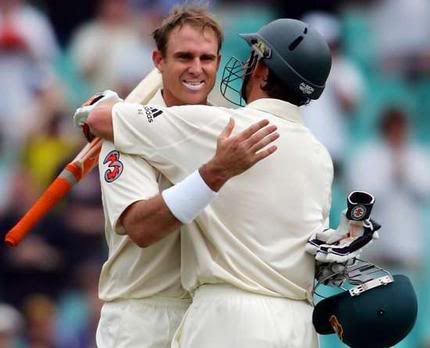
*Acknowledgements to Wikipedia.org and owners of pictures and videos used.

